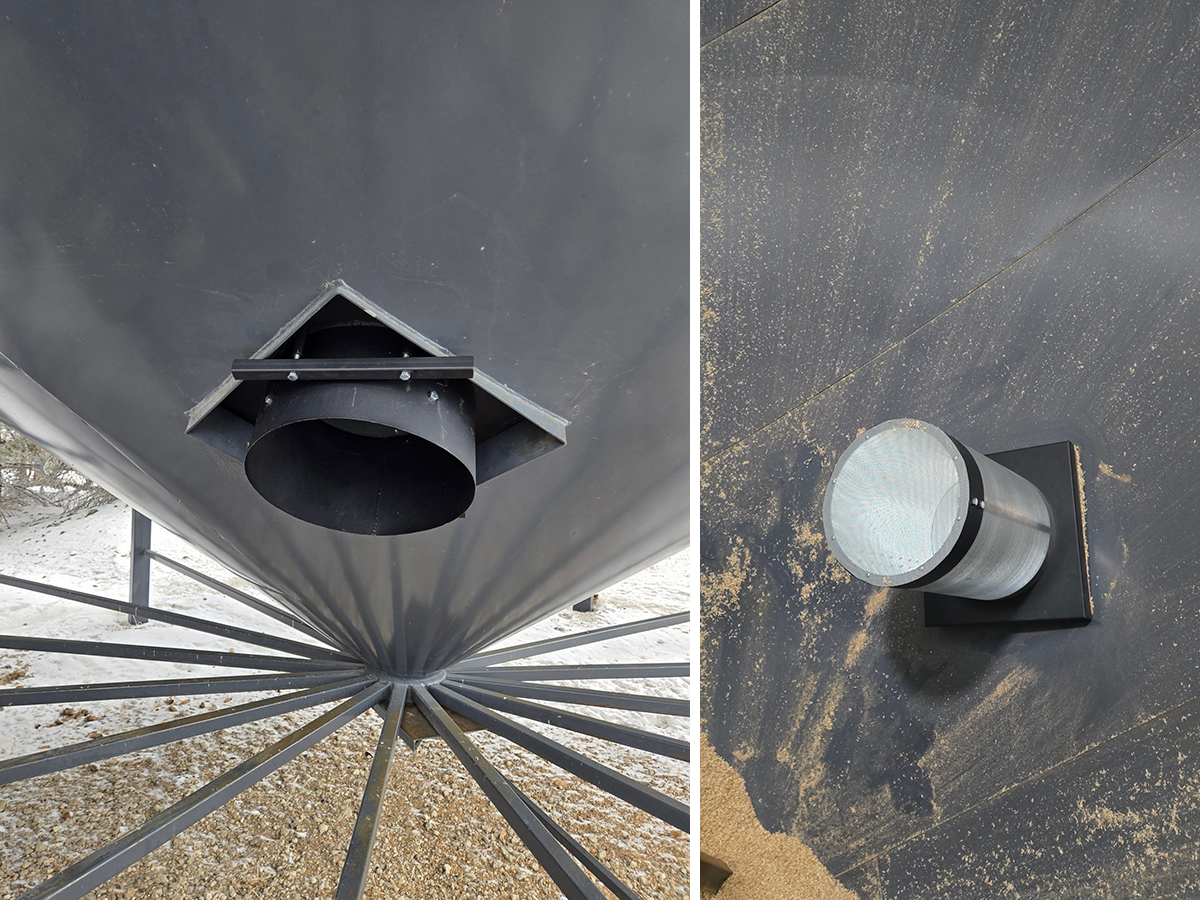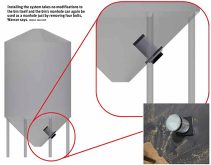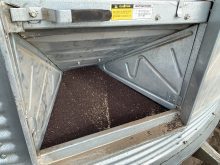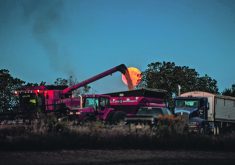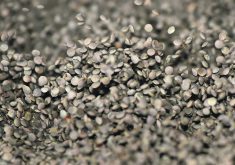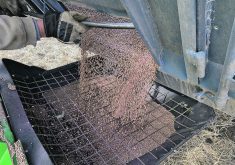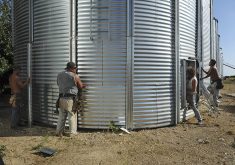Many farms have older hopper-bottom bins without aeration systems, which limits their usefulness.
Usually, converting them to aeration bins can be expensive and time consuming. However, the Manhole Aeration System from Saskatoon-based Wavcor provides a low-cost way to do that.
The compact Wavcor system is a single unit with a short length of ducting designed to fit through existing manhole covers on the hoppers. It provides a fast and easy, bolt-on way to get some airflow into a bin.
Read Also

Going beyond “Resistant” on crop seed labels
Variety resistance is getting more specific on crop disease pathogens, but that information must be conveyed in a way that actually helps producers make rotation decisions.
“This goes in the existing manhole,” says Wavcor engineer Jason Griffith.
“So you don’t have to cut a hole or anything like that in the bottom of the bin. It’s only two feet long, but because of the position (on the hopper), it’s still quite close to the centre of the bin. The end of it is perforated, so you’re blasting that air into the centre of the bin, basically. It’s a perforated tube we use. It’s small enough that canola doesn’t enter it.”
The Wavcor system doesn’t provide as much ducting as a complete aeration system, so air distribution is limited. However, it does provide an easy way to convert older bins and still get a reasonable amount of airflow.
“This is aimed at those bins that don’t have a system in there already,” he adds.
“To put competitive systems in, you have to cut holes in the bin, and they’re quite a few thousands of dollars more expensive. And they take a lot of work.”
The duct work on the Wavcor Manhole system gets close to the centre of the bin, but not quite all the way because when grain flows out of the bin, it is pulled down through the centre of the pile. Keeping the duct work out of that downward flow minimizes the pressure that would be applied to it when removing grain.
”If this was any longer, it would protrude into that flow of grain and you’d have a lot of force put on this thing,” Griffith says.
That smaller size also allows for a lighter design, making it easier to install and remove. The amount of airflow depends on what fan is used.
“We have our 20 horsepower air fan,” adds Griffith.
“On the 3,000 bushel bin we did testing on, we were getting over 3,000 CFM (cubic feet per minute) of air flow. Now, if you have a three horsepower fan on there, you’re going to get a lot less airflow.
“Where this is good is if you have that old 2,000 or 3,000 bushel bin you don’t want to get rid of in case you need the space, but you’re also scared to use it because you can’t get any air in there. This gives you an option without spending very much money and doing a big upgrade. You can get air into that bin and have peace of mind when you put grain in it.”
The Wavcor system could also be a good fit with smooth-wall fertilizer bins. It could allow for airflow when grain is stored in them where permanent ductwork would be corroded by contact with the fertilizer. The Wavcor system could be removed when fertilizer is stored in the bin and reinstalled when used for grain.
For bins used to store cleaned seed, it eliminates the need to go into an aeration bin to clean out permanent ducting to avoid contamination from whatever was in the bin previously.
Wavcor provides a flexible connection to allow a fan to connect to the system without being bolted directly to the bin, making installation and removal of the system much faster and easier.
“We don’t mount the fan right to it, so we provide an air sock, so you can run it to whatever fan you have sitting there,” says Griffith.
“The idea of that is it makes it easy to get in the bin. You don’t have to unbolt and move a fan every time you want to get into the bin.”
The Wavcor system retails for $1,190 and is available in different sizes to match common round or square manhole sizes.




